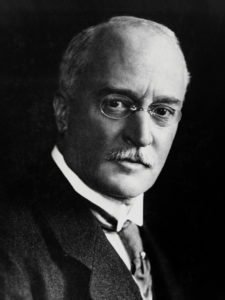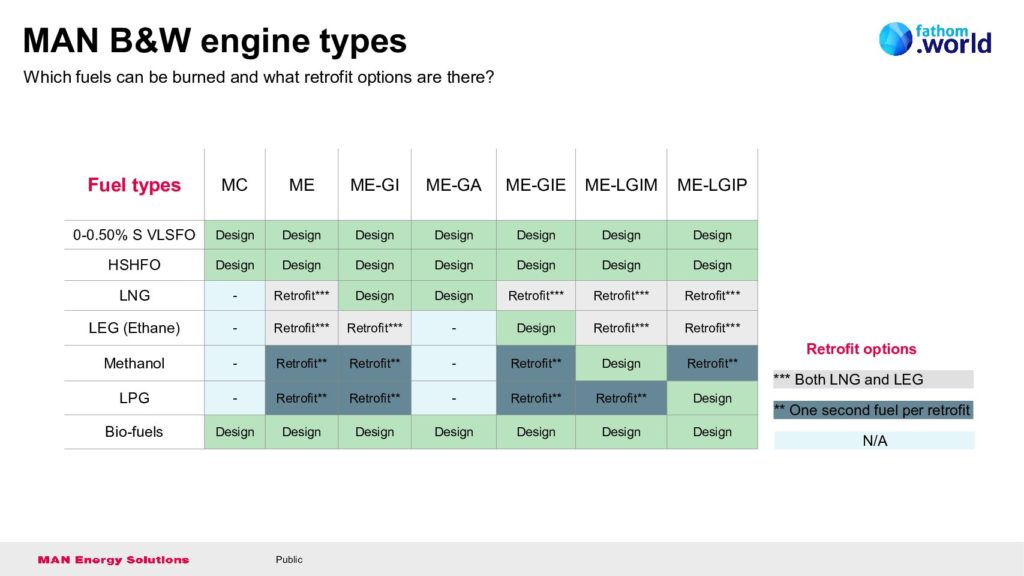MAN Diesel changed its name 18 months ago. It makes sense, but by looking at its origins Craig Eason gets a sense of where the company wants to go with future fuels.
In today’s increasingly climate focused society it was perhaps inevitable that MAN would drop the Diesel from the name of its marine engine business in 2018, opting to focus on a broader name that it says focuses on its new ambitions. Calling the business MAN Energy Solutions, as the business is now known, is, for a large German industrial corporation, no small move.
The fact that the Diesel name has become more synonymous with a hydrocarbon fuel than the German scientist and engine maker that gave it the name is perhaps reason enough.

Engine historians will no doubt find amusement in the fact that Rudolf Diesel’s earliest engines were demonstrated at the World Expo in Paris in 1889 fueled by peanut oil, a biofuel, before his first MAN-backed prototypes emerged in 1893 powered by petrol. By then the oil majors that were emerging into power had seen a great advantage for their newly invested refined crude oil products at that time, as they did with the spark-ignition engines of Otto, invented a couple of decades earlier.
Versatility
But it is this versatility of the Diesel cycle, as the combustion process is known that makes MAN certain that it can utilise a range of different fuels in its engines as shipping looks to its decarbonisation.
The Diesel cycle works by compressing air, whereby under pressure it gets very hot. When a combustible fuel is injected it ignites due to the temperature in the cylinder being greater than the ignition temperature of the fuel. The spark-ignition engines clearly require an electrical spark to create the explosion in an engine cylinder chamber.
As shipping now looks to a decarbonised future – regardless of how one defines the goal. the versatility of an established engineering process is likely to be critical. For some the goal of decarbonisation means zero emission, for others there is what they see as a more nuanced approach, where a “net zero” is the goal, which does allow GHG emissions form a ship’s funnel. While this debate is set to intensifying from 2020 there remains as to date no established and as yet proven deep sea vessel trading commercially in the market that emits no CO2 emissions from the funnel.
But for MAN Energy Solutions that is not the pure goal. The goal is to provide a range of solutions, a range of fuel choice options for all eventual outcomes.
And this is where its new ambitions and strategy kick in. MAN ES says it has an engine design for nearly all the possible fuels that shipping may find itself using, even potentially aligning some of them with other solutions such as energy storage (batteries), fuel cells, and propulsion assistance (wind-assist). The company is also loosely involved with the Danish research project, Decarbonice, looking to freeze ship CO2 emissions and drop them into the seafloor as a novel type of carbon capture and storage.

Brian Østergaard Sørensen is head of two stroke research and development at MAN Energy Solutions operations in Copenhagen.
He has the job of overseeing the testing and development of the range of engine solutions that the company has under development, or even ready, for use with new fuels, along with any abatement solutions.

While MAN, just as the rest of the maritime and shipping industry, has to see how the rule makers’ discussions about CO2 emission reduction from global shipping evolve, it has to hedge its bets.
Horses for courses
A key question will be whether future regulations take a holistic life-cycle approach, where the overall emissions from the fuel’s origin until combustion onboard a ship are taken into account, (sometimes referred to as well-to-wake with fossil fuels) or whether the regulations of the future deal solely with the onboard part of this process (tank-to-wake).
As Sørensen states, and as Rudolf Diesel himself made clear in the 19th century with his use of peanut oil, when it comes to burning hydrocarbons in a diesel engine, it does not mater where the molecule comes from. An internal combustion engine (ICE) can burn a hydrocarbon produced from a fossil fuel just as well as hydrocarbon molecule (or non-carbon molecule) produced synthetically through a Power-to-X process (using electricity, particularly renewable electricity, to create fuels through electrolysis) or a biofuel.
But, if the regulators choose to push forward more tank-to-wake based regulations, then MAN has also been focusing some of its research and development investment into those fuels that have no hydrocarbons such as ammonia or hydrogen, as well as abatement technology. Though as Sørensen points out the abatement technology to remove CO2 is in no way near a point of commercial maturity, or at a price competitive level, thus it is much easier to remove the carbon based molecules ashore.
Another cause for hedging its bets is the development of shipowner appetite. Again, as Sørensen notes, while people may want decarbonisation to happen, they recognize that there is the need for the right regulation to be in place to push on with the transition, and at that point the industry will need to learn quickly to move forward at the same speed.
There is also the question of biofuels. The peanut oil tests by Diesel were only 130 years ago, and show it is possible, and Sørensen says that any biofuel, whether as a gas, a heavy fuel or a more refined product, will largely be treated by the engine like its hydrocarbon equivalent with some design adjustment. The question though is nothing to do with the technology, but the more upstream question of where plentiful sustainable biofuels could be sourced.
Deep sea ammonia engines by 2024
Ammonia (NH3) therefore is attractive as a fuel he says, though notes the serious issues of it being poisonous, and in the future believes there could be scope for hydrogen, though with hydrogen the company will likely only push ahead with research if it feels that market is ready for it. The challenge with ammonia combustion in an internal combustion engine is the nitrous oxide levels that result when ammonia reacts with the oxygen in air (NH3 +O2). Again for this Sorensen points to the need for abatement technology as part of the overall solution, and here there is experience in the industry with Selective Catalytic Reduction technology and exhaust gas recirculation systems).
In recent months the company has been investing in ammonia fuel research, including a project with Lloyd’s Register and Dalian Shipyard aimed at developing an initial design of an ammonia-fueled large container vessel.
The technology is being based on MAN’s LGIP engine technology and So Sørensen thinks this could be ready by 2024. He points out that MAN knows that ammonia can be used in its engines,it is the safety aspects that need to be resolved.































